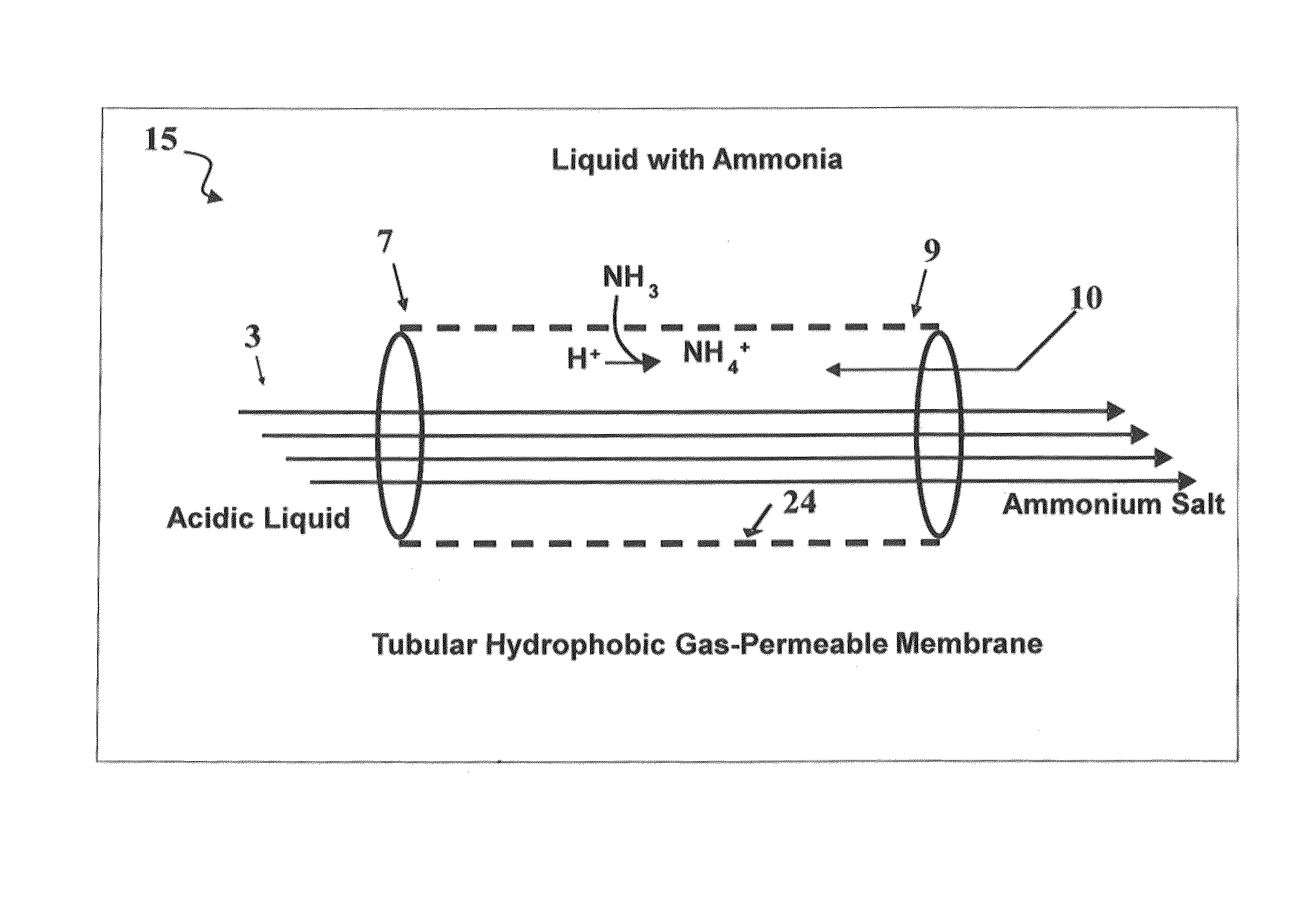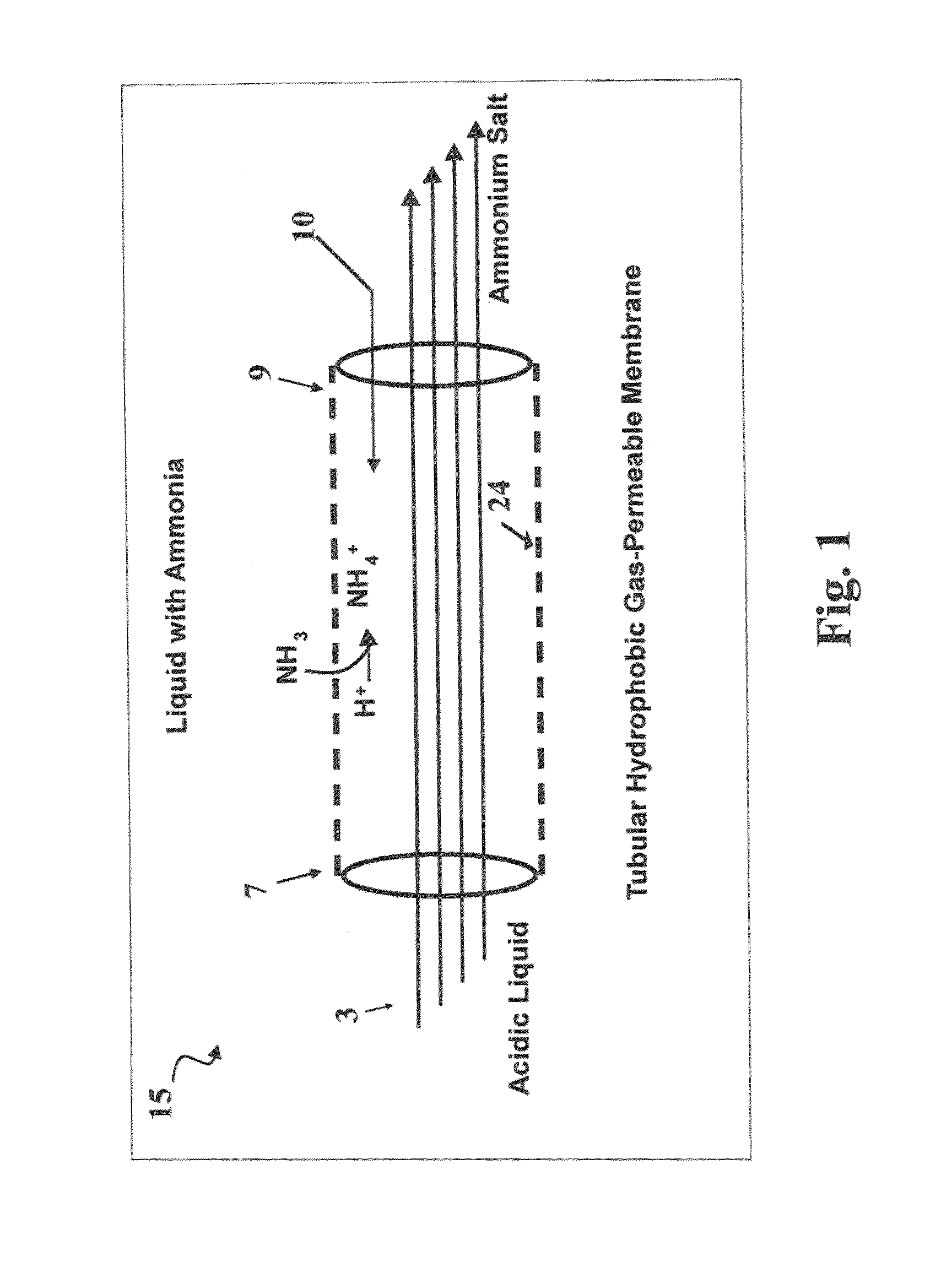Systems and methods for reducing ammonia emissions from and for recovering the ammonia liquid effluents
a technology of ammonia liquid effluent and ammonia emission reduction, which is applied in the direction of sedimentation separation, differential sedimentation, solid separation, etc., can solve the problems of reducing the level of nh3, confined animals in high densities, and lack of functional and sustainable waste treatment systems. , to achieve the effect of reducing the level of nh3
- Summary
- Abstract
- Description
- Claims
- Application Information
AI Technical Summary
Benefits of technology
Problems solved by technology
Method used
Image
Examples
example 1
[0079]Five bench-scale experiments were conducted using gas-permeable tubular membranes to remove ammonia from livestock wastewater.
[0080]In the first experiment, digested liquid swine manure was obtained from two anaerobic swine lagoons that contained approximately 140 and 300 mg NH4 / L and at a pH of approximately 8.3 to 8.4. In these anaerobic lagoons, raw flushed manure goes through anaerobic digestion process creating a digested liquid effluent. For this experiment, an open configuration was used meaning that the stripping solution 1 (water) was passed only one time through the tubular membrane 7 at a flow rate of 36 mL / hour (FIG. 2). The influent to the hollow interior 10 of membrane 7 is water and the effluent from the membrane 7 hollow interior 10 was ammoniated water. The ammoniated water effluent was then dripped into a second vessel, tank 2, that contained approximately 4 ml of 1N HCl 3 to convert the ammonia into ammonium and prevent ammonia loss through volatilization. T...
PUM
| Property | Measurement | Unit |
|---|---|---|
| concentrations | aaaaa | aaaaa |
| concentrations | aaaaa | aaaaa |
| porosity | aaaaa | aaaaa |
Abstract
Description
Claims
Application Information
 Login to View More
Login to View More - R&D
- Intellectual Property
- Life Sciences
- Materials
- Tech Scout
- Unparalleled Data Quality
- Higher Quality Content
- 60% Fewer Hallucinations
Browse by: Latest US Patents, China's latest patents, Technical Efficacy Thesaurus, Application Domain, Technology Topic, Popular Technical Reports.
© 2025 PatSnap. All rights reserved.Legal|Privacy policy|Modern Slavery Act Transparency Statement|Sitemap|About US| Contact US: help@patsnap.com



